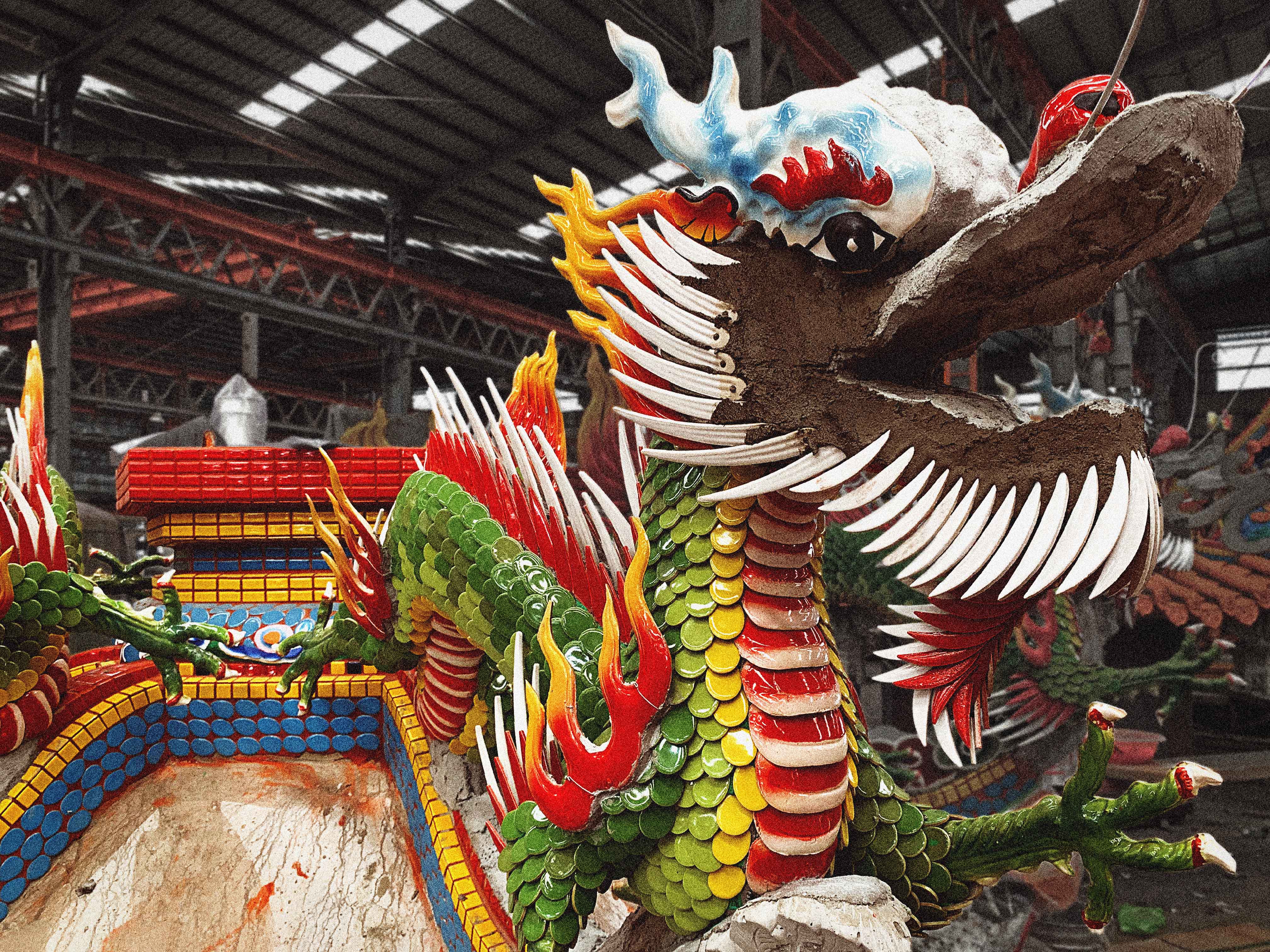FAQ
2024.09
01
The Art of Cut-and-Paste: The History and Aesthetics of Taiwanese Temple Decorations

Cut-and-paste, also known as Jianhua, is a type of folk sculptural art from Southern China. It was introduced to Taiwan in response to the decorative needs of Taiwanese temples, where it has gradually evolved.
As the name suggests, cut-and-paste involves cutting first and then pasting. The process begins with creating a wireframe skeleton, followed by molding a prototype with plaster. The final step involves cutting porcelain plates, bowls, and vases into the required shapes and adhering them to the molded form.
During the Japanese colonial period, materials such as porcelain plates, bowls, and vases were used. After World War II, the use of colored glass and acrylic materials began. In the 1960s, the development of glazing (applying glaze to ceramic blanks) started. This technique produces products that do not fade easily, allowing the overall work to appear lavish and diverse from a distance, while also reducing labor hours and saving costs, which is why it continues to be used today.